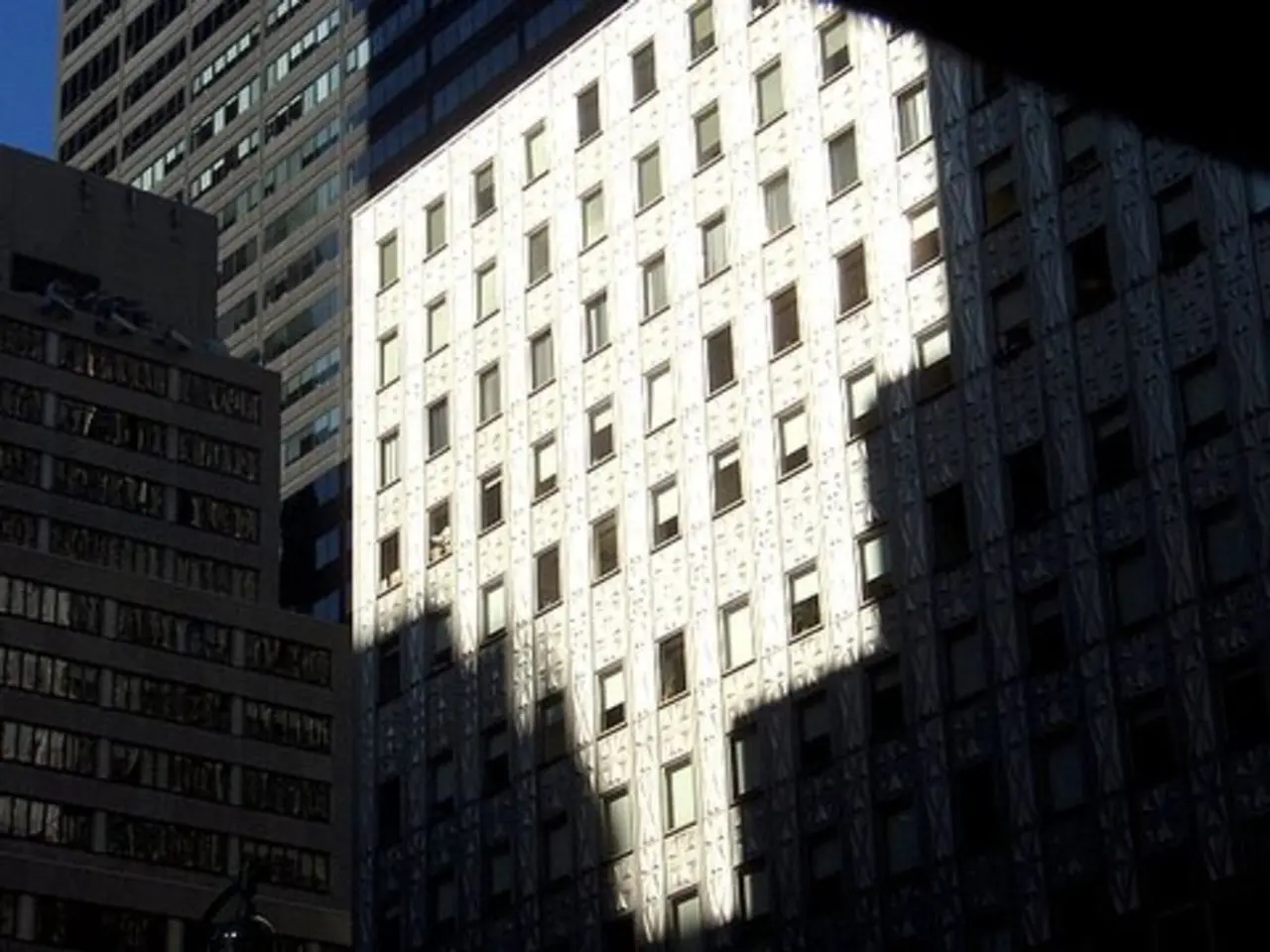Methods for Insulating an Extension: Our Guide Explores the Choices Available
=====================================================
When building an extension, it's essential to consider the style and age of the existing house, as well as the intended use of the new space. Insulating your extension can ensure comfort and have a positive impact on the existing spaces.
Improving Energy Efficiency in Existing Homes
Draught proofing measures like draught proofing tape, secondary glazing, insulating window film, and padded draught excluders are great options to improve energy efficiency in existing homes. For older homes, a weighted draught excluder can help keep your rooms toasty if the doors in the existing section of your house are not a great fit in their frames. Self-adhesive weather stripping can also make a huge difference in keeping out the cold in homes with older windows.
Insulating Walls in Extensions
Common and effective insulation materials for walls include mineral wool or fibreglass, which are affordable, versatile, and sustainable options suitable for lofts, inner stud walls, and cavity walls. Rigid insulation boards made from polyisocyanurate (PIR) offer exceptional thermal insulation and are often used internally or externally on walls, although they are less sustainable due to their synthetic nature. For period properties, breathable insulation materials like mineral wool or natural fibre insulations are preferred to reduce condensation risks.
Insulating Roofs in Extensions
For pitched roofs, insulation can be placed above the rafters or between them. Mineral wool rolls are a popular choice for insulating pitched roofs, while PIR boards are often used for loft insulation boards under rafters. For flat roofs, insulation is usually placed above the roof deck to meet modern standards and prevent condensation issues. Rigid foam insulation (e.g., PIR, EPS, or XPS boards) are commonly used for flat roofs due to their good thermal performance and moisture resistance.
Insulating Floors in Extensions
For floors, particularly over concrete slabs or suspended timber, rigid boards made of EPS (expanded polystyrene) or XPS (extruded polystyrene) are popular for insulating concrete floors due to their compressive strength and thermal performance. Suspended timber floors often use loose-fill cellulose insulation blown between joists or mineral wool rolls due to their flexibility and thermal properties.
Choosing the Right Insulation
The choice of insulation depends on access, moisture issues, sustainability, and thermal requirements. Period properties often require more breathable materials and careful preservation considerations, while modern homes benefit from rigid insulation for performance and ease of installation. Flat roofs require materials that address drainage and moisture challenges unique to their design.
In summary:
| Building Part | Best Materials | Notes | Suitability | |---------------|-----------------------------------|------------------------------------|------------------------------------| | Walls | Mineral wool, fibreglass, PIR boards | Versatile; PIR offers high insulation but less sustainable | Modern homes (PIR); Period homes (mineral wool, breathable) | | Roofs | Mineral wool/fibreglass rolls, PIR boards, rigid foam (flat roofs) | Flat roofs need rigid, moisture-resistant boards and good drainage | Pitched roofs (mineral wool, fibreglass); flat roofs (rigid foam) | | Floors | Rigid EPS/XPS boards, cellulose loose fill, mineral wool | EPS/XPS good for concrete floors; cellulose for timber floors | Modern homes with concrete/floors; Typical choice for both |
Furbnow, a company that specializes in insulation, is an expert in this field and can provide guidance on choosing the right insulation for your extension project.
- The intended use of a new home extension should match the style and age of the existing house for a seamless look.
- Improving energy efficiency in existing homes can be achieved through various methods, such as draught proofing, self-adhesive weather stripping, and insulating window film.
- For older homes with doors that don't fit properly, weighted draught excluders can provide an effective seal.
- When insulating walls in extensions, materials like mineral wool, fibreglass, and PIR boards are popular choices due to their versatility and thermal performance.
- For pitched roofs, insulation can be placed above or between the rafters, with mineral wool rolls and PIR boards being common options.
- For flat roofs, rigid foam insulation boards, such as PIR, EPS, or XPS, are often used due to their good thermal performance and moisture resistance.
- When insulating floors in extensions, rigid EPS or XPS boards and loose-fill cellulose insulation are common choices, with EPS being a good option for concrete floors.
- The selection of insulation materials depends on factors such as access, moisture issues, sustainability, and thermal requirements.
- A company like Furbnow, which specializes in insulation, can help guide homeowners in choosing the right insulation for their extension project.
- Insulating your extension can ensure comfort and have a positive impact on the energy efficiency of the existing spaces in your home, contributing to a more sustainable lifestyle and reducing costs in the long run.




